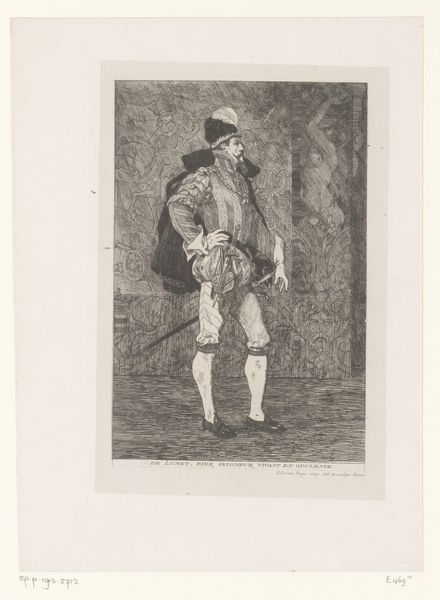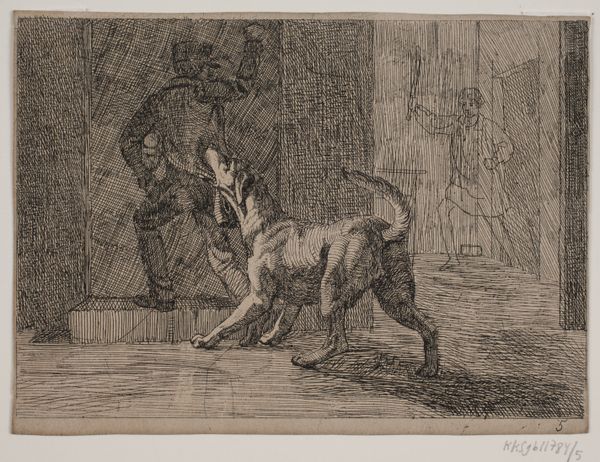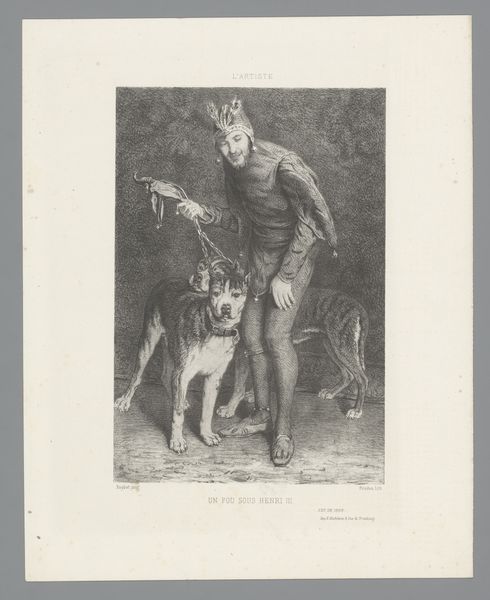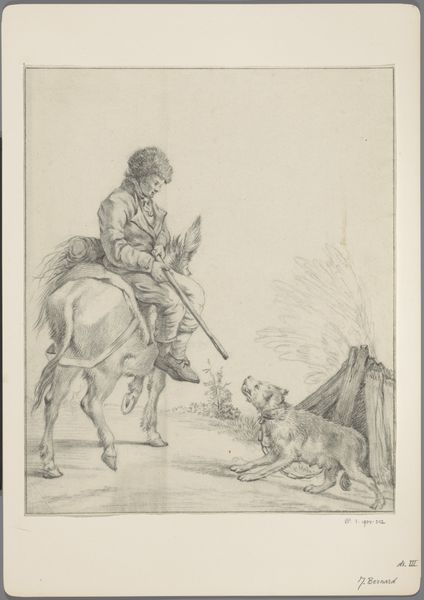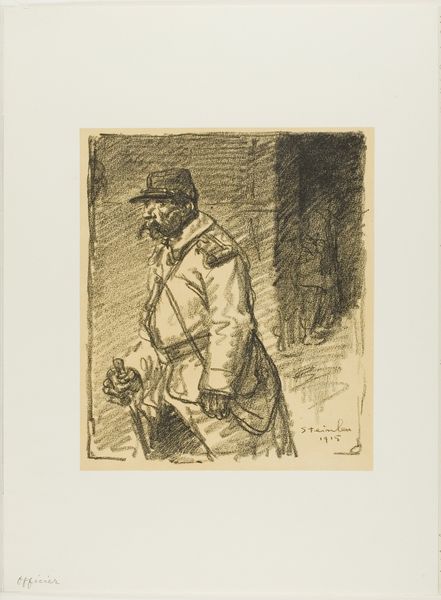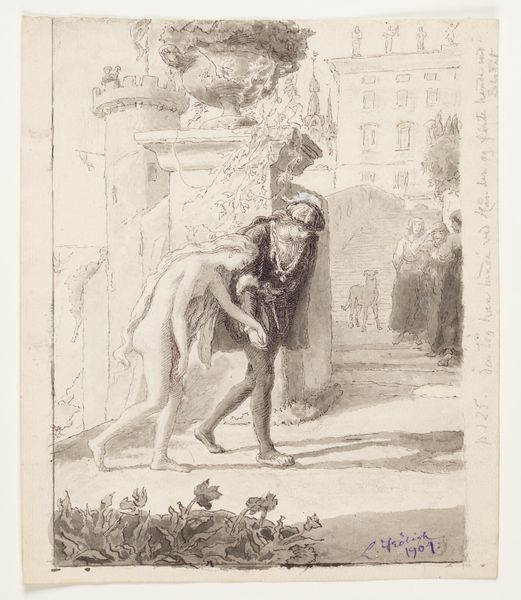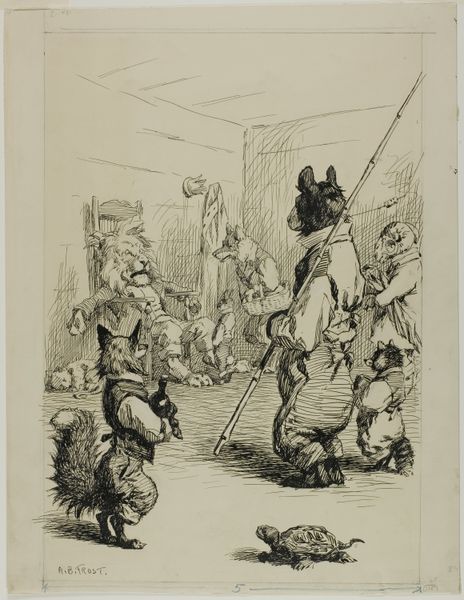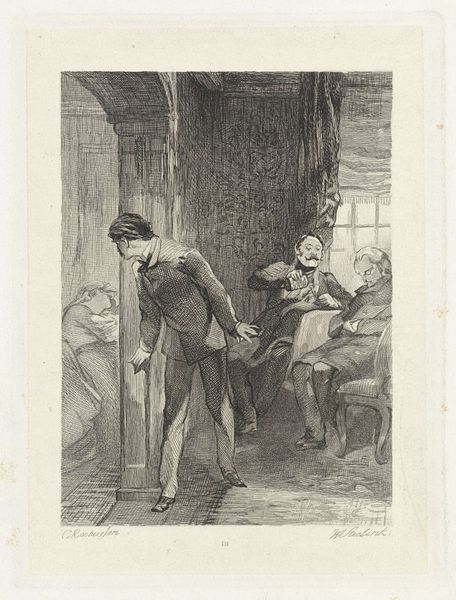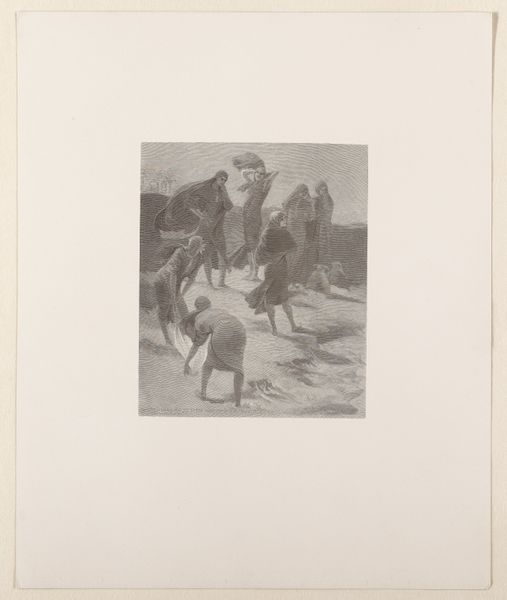
print, etching
#
narrative-art
# print
#
etching
#
dog
#
landscape
#
figuration
#
history-painting
Dimensions: height 288 mm, width 208 mm
Copyright: Rijks Museum: Open Domain
Editor: Ferdinand Roybet's etching, "Nar met twee honden", made sometime between 1850 and 1920, depicts a man in historical clothing walking two dogs. The contrast between light and shadow is captivating, particularly in the way it defines the texture of the figures and the ambiguous background. What strikes me most is how the sharp, controlled lines seem to trap the figures. What compositional elements stand out to you? Curator: The immediate interest for me lies in the meticulous network of lines. Consider how Roybet uses hatching and cross-hatching not merely to model form, but to construct a complex surface of visual incident. This dense accumulation of marks becomes the very subject, arguably more compelling than any narrative content suggested by the title. How do you see the interplay of these lines shaping the mood? Editor: I think the density of the lines, and the stark contrast with the lighter areas, gives the image an intensity, almost like a contained energy. There is tension, or anxiety. Is that purposeful or am I projecting my own feelings? Curator: Consider how Roybet employs line weight and direction to direct the eye. The heavier lines defining the contours of the figures and the primary dog draw immediate attention, whereas the finer, more diffuse lines in the background suggest depth without sacrificing surface interest. The semiotician in me wonders about the syntax of these marks; do they cohere into a unified statement, or do they offer multiple, conflicting readings? The treatment feels almost allegorical. Do you see this, too? Editor: Yes, it does! I see a powerful dynamic emerging between clarity and obscurity. The precise rendering of the man's garments and the leading dog versus the blurred, ambiguous rendering of the background does speak to a kind of tension or an allegorical meaning we cannot easily place. Curator: Precisely. So the subject may matter, but really it's how it has been delivered and what that says that's most important. I will consider the dynamic tension further in my analysis of Roybet's use of formalist properties. Thanks.
Comments
No comments
Be the first to comment and join the conversation on the ultimate creative platform.
